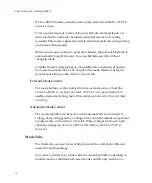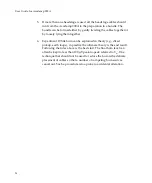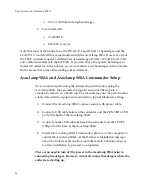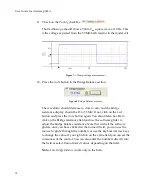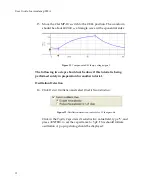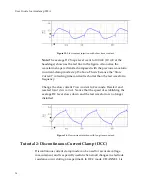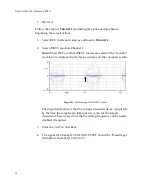
User
Guide
for
Axoclamp
900A
13.
Press
the
Reset
to
Program
Defaults
button
and
accept
the
warning
by
clicking
on
Yes
to
continue.
Information
about
the
connected
headstages
is
displayed
at
the
top
of
the
Commander
interface,
including
the
current
injection
resistance
(R
0
)
for
each
headstage.
For
the
HS
‐
9A
×0.1
headstage,
R
0
is
100
M
Ω
,
and
for
the
HS
‐
9A
×1,
R
0
is
10
M
Ω
.
14.
Connect
a
BNC
cable
between
the
SCALED
OUTPUT
for
Channel
1
and
an
external
oscilloscope.
15.
Connect
another
BNC
cable
between
the
SCALED
OUTPUT
for
Channel
2
and
the
oscilloscope.
16.
Connect
another
BNC
cable
between
the
external
trigger
input
of
the
oscilloscope
and
the
SYNC
OUTPUT
BNC
on
the
rear
panel
of
the
Axoclamp
900A.
Tutorial
1:
Current
Clamp
(IC)
Equipment
required:
CLAMP
‐
1U
model
cell.
HS
‐
9A
×0.1.
HS
‐
9A
×1.
If
you
have
just
performed
the
Axoclamp
900A
setup
please
skip
to
step
9.
There
is
no
need
to
turn
off
the
power
to
the
Axoclamp
900A
prior
to
connecting
headstages.
However,
do
not
disconnect
headstages
while
the
software
is
starting
up.
1.
Connect
the
HS
‐
9A
×0.1
headstage
connector
to
the
CHANNEL
1
HEADSTAGE
INPUT
on
the
rear
panel.
28

